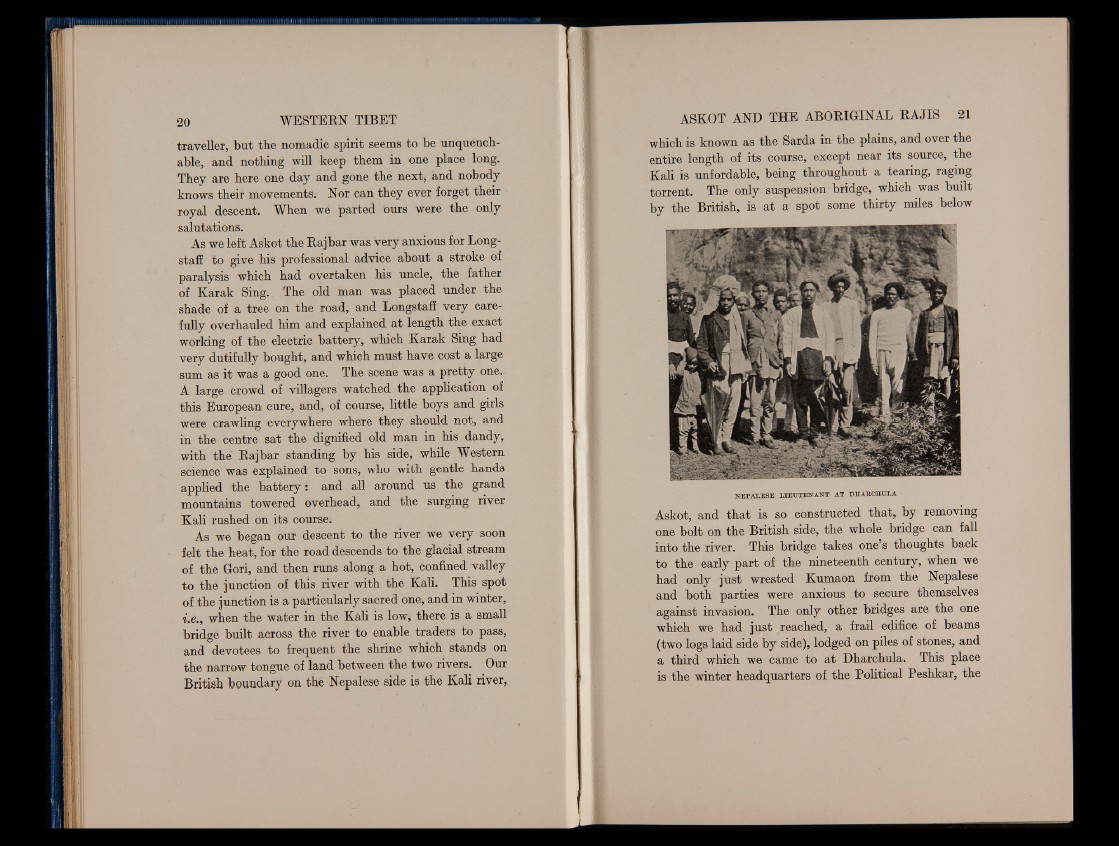
traveller, but the nomadic spirit seems to be unquenchable,
and nothing will keep them in one place long.
They are here one day and gone the next, and nobody
knows their movements. Nor can they ever forget their
royal descent. When we parted ours were the only
salutations.
As we left Askot the Raj bar was very anxious for Long-
staff to give his professional advice about a stroke of
paralysis which had overtaken his uncle, the father
of Karak Sing. The old man was placed under the
shade of a tree on the road, and Longstaff very carefully
overhauled him and explained at length the exact
working of the electric battery, which Karak Sing had
very dutifully bought, and which must have cost a large
sum as it was a good one. The scene was a pretty one.
A large crowd of villagers watched the application of
this European cure, and, of course, little boys and girls
were crawling everywhere where they should not, and
in the centre sat the dignified old man in his dandy,
with the Raj bar standing by his side, while Western
science was explained to sons, who with gentle hands
applied the battery: and all around us the grand
mountains towered overhead, and the surging river
Kali rushed on its course.
As we began our descent to the river we very soon
felt the heat, for the road descends to the glacial stream
of the Gori, and then runs along a hot, confined valley
to the junction of this river with the Kali. This spot
of the junction is a particularly sacred one, and in winter,
i.e., when the water in the Kali is low, there is a small
bridge built across the river to enable traders to pass,
and devotees to frequent the shrine which stands on
the narrow tongue of land between the two rivers. Our
British boundary on the Nepalese side is the Kali river,
which is known as the Sarda in the plains, and over the
entire length of its course, except near its source, the
Kali is unfordable, being throughout a tearing, raging
torrent. The only suspension bridge, which was built
by the British, is at a spot some thirty miles below
NE PAL E SE LIEUT ENA NT AT DHARCHULA
Askot, and that is so constructed that, by removing
one bolt on the British side, the whole bridge can fall
into the river. This bridge takes one’s thoughts back
to the early part of the nineteenth century, when we
had only just wrested Kumaon from the Nepalese
and both parties were anxious to secure themselves
against invasion. The only other bridges are the one
which we had just reached, a frail edifice of beams
(two logs laid side by side), lodged on piles of stones, and
a third which we came to at Dharchula. This place
is the winter headquarters of the Political Peshkar, the